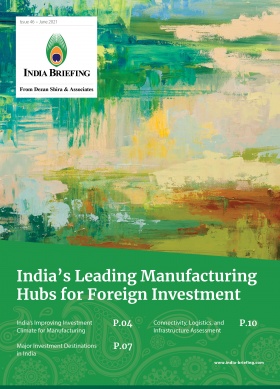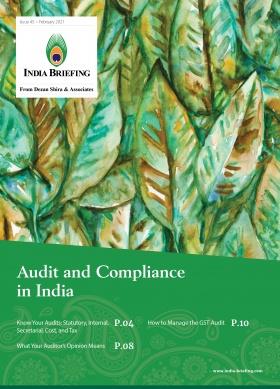What is GST in India? Tax Rates, Key Terms, and Concepts Explained
The Goods and Services Tax (GST), launched on July 1, 2017 is a single, value-added tax levied on the manufacture, sale, and consumption of both goods and services at the national level. The new tax subsumes most indirect taxes previously levied at the federal and state level.
 What is GST?
What is GST?
GST is a consolidated tax based on a uniform tax rate fixed for both goods and services across India, and is payable at the final point of consumption. At each stage of sale or purchase in the supply chain, the tax is collected on value-added goods and services, through a tax credit mechanism (or input credit mechanism).
The principal objective underlying the one tax-system is to create a single, uniform market across India to facilitate business transactions and make domestic goods competitive in the international market.
Accordingly, GST promises to simplify and rationalize the tax structure, reduce tax compliance burden, increase the tax base, and bring down final cost of goods and services produced.
Key features
Dual tax
The GST is a dual levy, which means that both the federal and State government levy tax on supply of goods and services based on the nature of transaction: Inter-State or Intra-State. Accordingly, GST has two concurrent components: one, a State/Union territory GST (SGST/ UTGST), levied and collected by the state or union territory (UT) and two, a Central GST (CGST), levied and collected by the federal government. The dual levy characteristic of GST has been kept in line with the constitutional requirements of fiscal federalism in India.
Integrated Goods and Services Tax (IGST)
Under GST, inter–State supplies between any two States and imports to the country are subject to the IGST, which is levied and collected by the federal government. The IGST is the aggregate of the CGST and SGST; it is appropriated from the State where the supplies are consumed.
Tax on supply
Tax on supply refers to the GST applicable on the supply of all goods and service. Previously, tax was applicable across all levels of supply chain – manufacture, sale, or provision of goods and services. But, under GST, the liability to pay CGST or SGST arises at the time of supply. Depending on whether the transaction is inter-state or intra-state, separate GST provisions are applicable to help a business determine the place of supply for goods and services.
Destination based tax
It implies that the GST is levied only at the final destination of consumption. The principle of destination-based tax is one of the factors that helps in determining the place of supply. This, as a result, helps in deciding the tax which is to be levied on the transaction of goods and services. If the transaction is intra-State, it is subject to CGST + SGST and if it is inter-State, it is subject to IGST.
Input tax credit (ITC) mechanism
The ITC forms the backbone of the GST regime in India. The ITC mechanism helps in the seamless flow of tax-credits throughout the value-chain, and across boundaries of States.
The GST is essentially a tax on value addition at each stage of the supply chain; every supplier, who is the person supplying the goods and/ or services or an agent acting as such on behalf of such a supplier, can claim credits (over input taxes paid at each stage of supply chain) in the subsequent stage of value addition. Thus, a continuous chain of set off is established from the original producer’s or service provider’s level up to the retailer’s level, thus, eliminating the burden of double taxation.
Suppliers at each stage are permitted to set off the GST paid on the purchase of input goods and services against GST to be paid on the supply of goods and services.
It is important for dealers to note that no cross utilization of the ITC is permitted between the state and federal levy. This means that the credit of CGST paid on inputs may be used only for paying CGST on the output, while the credit of SGST on inputs may be used only for paying SGST, except in the case of inter-State supply of goods.
To avail input tax credit, the following conditions must be met:
- The dealer holds a tax Invoice, a debit note issued by the registered supplie, or any such tax paying documents as may be prescribed.
- Details of such tax invoice or debit note must have been furnished by the supplier in GSTR-1.
- The said goods or services have been received.
- Returns (Form GSTR-3B) have been filed.
- The supplier has paid the due tax to the government, either in cash or via claiming ITC.
Reverse charge concept
- Unregistered dealer selling to a registered dealer: In such a case, the registered dealer has to pay GST on the supply.
- Services through an e-commerce operator: If an e-commerce operator supplies services, then reverse charge will apply on the e-commerce operator. They will be liable to pay GST.
- Supply of certain goods and services specified by Central Board of Indirect Taxes and Customs (CBIC): CBIC has specified a list of certain goods and services on which reverse charge is applicable.
- Input tax credit on reverse charge: Tax paid on reverse charge basis will be available for ITC if such goods and/or services are used, or will be used, for business. The service recipient, that is, the one who pays reverse tax, can avail ITC.
Invoice matching system
The GST allows for a seamless flow of ITC across the supply chain. One of the essential features of the GST is to check ITC claims by the taxpayer to prevent any leakages. For this purpose, an invoice matching system has been developed under GSTN to match the purchase and sale invoices of taxpayers. Accordingly, every registered taxable person under GST is required to issue a tax invoice, which will be uploaded on the invoice matching system. After the sale and purchase invoices of a tax payer have been matched, the ITC will be conferred.
Goods and Services Tax Network (GSTN)
GSTN is a not-for-profit company, which has the federal government, State and union territory governments, leading Indian financial institutions like ICICI Bank, HDFC Bank, HDFC Ltd, LIC Housing Finance, the National Stock Exchange Strategic Investment Corporation Ltd, and taxpayers as its shareholders. GSTN’s role is to provide information technology support to ensure a smooth transition from the previous indirect tax regime to procedures under GST.
GST compliance rating system
It is a unique form to rate whether a taxable person in India has been compliant. In this system, every taxable person has a rating based on their record of tax compliance. The score is updated at periodic intervals and placed in the public domain to ensure transparency.
Anti-profiteering clause
This clause allows businesses to pass on the benefits of reduced tax rate on goods or services, or both, to the consumers. Anti-profiteering clause has been added to prevent any rise in price of commodities following the GST implementation.
GST Council
It is a federal forum that includes federal, state, and union territory governments on its board. The GST Council comprising of the federal finance minister as the chairman, the federal Minister of State (Revenue), and the state and union territory finance ministers will make recommendations to the federal, state, and union territory governments on issues like tax rates, exemption lists, threshold limits, and all other matters relating to the GST.
The GST Council is also empowered to decide how to resolve disputes arising out of its recommendations. Decisions by the GST Council are based on a three-fourth majority of the votes cast: the federal government casts one-third of the votes, while the state and union territories cast two-third of the votes. Each state and union territory have one vote, irrespective of its size or population.
GST rates 2021
We list the revised GST Schedule for some goods and services, applicable for financial year 2021-22. As of 2021, GST tax slabs range from zero percent (Nil) to 28 percent.
Access the detailed list of GST rates applicable as on June 2021 here: Goods and Services.
About Us
India Briefing is produced by Dezan Shira & Associates. The firm assists foreign investors throughout Asia from offices across the world, including in Delhi and Mumbai. Readers may write to india@dezshira.com for more support on doing business in in India.
We also maintain offices or have alliance partners assisting foreign investors in Indonesia, Singapore, Vietnam, Philippines, Malaysia, Thailand, Italy, Germany, and the United States, in addition to practices in Bangladesh and Russia.
- Previous Article India’s Export Duty Remission Scheme to Promote Exports
- Next Article Debt Funding in India: Options Available to Foreign Investors, Entrepreneurs












